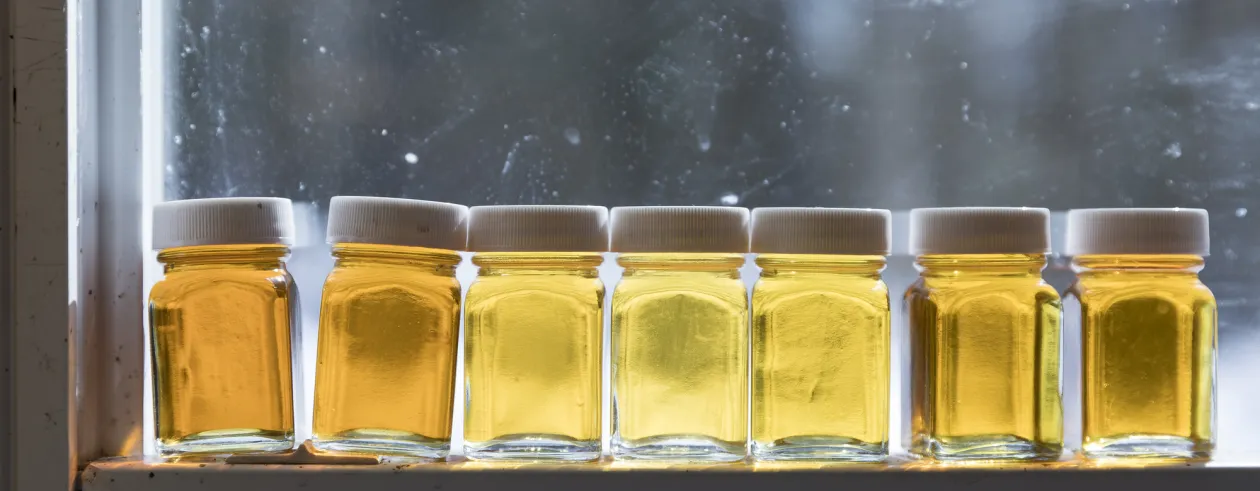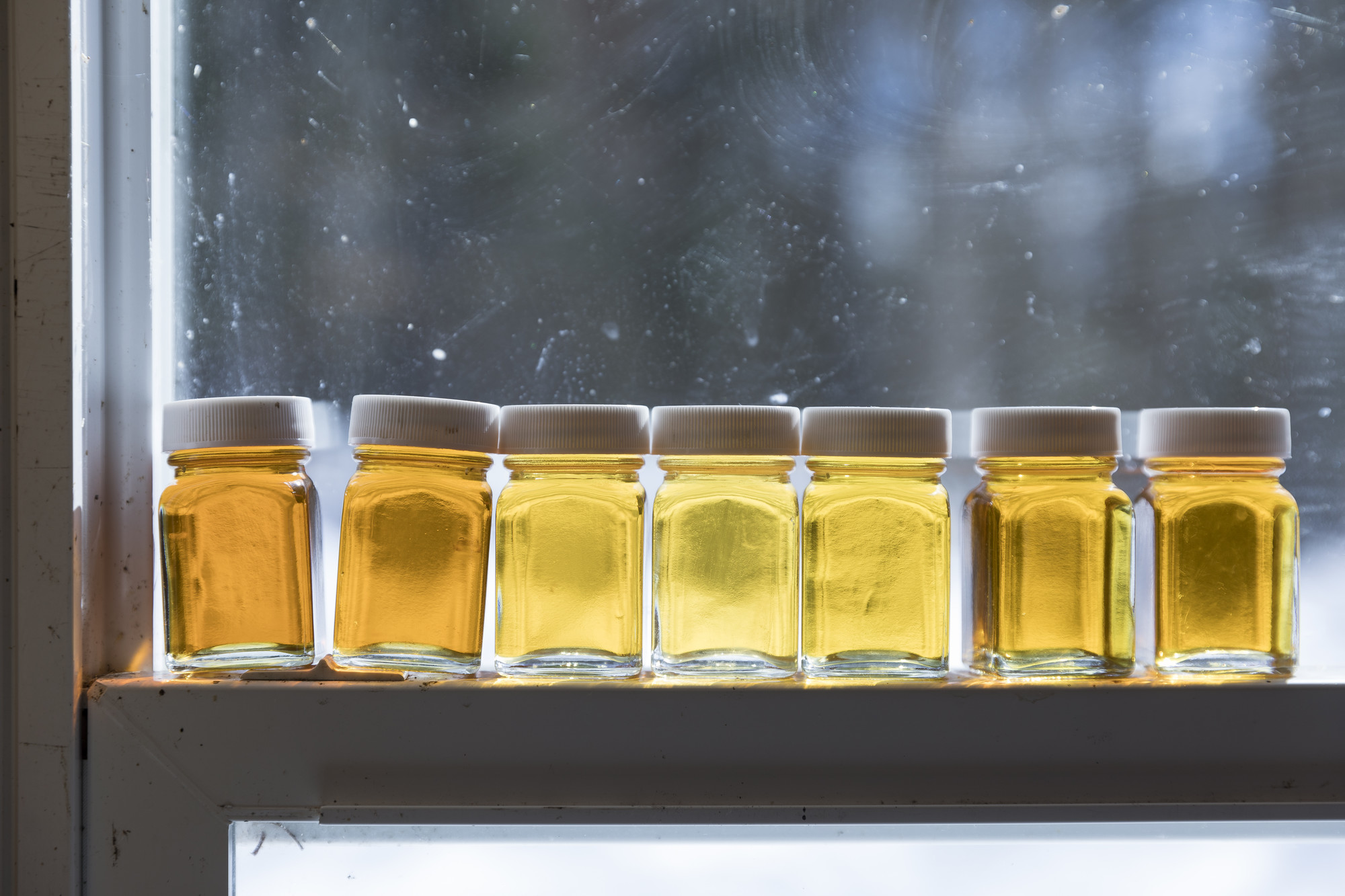
Sometimes in life you just have to slow down. Let’s be honest: rushing isn’t fun. Taking your time, savoring fresh air, a good book, or a delicious meal simply makes life better, and often, the best things in life are those that took their time coming to us. Maple syrup is like that. A small seed takes time to grow into a sapling, then a larger and larger tree. Within the maple tree, sap is created, freezes, flows, over and over, year after year. For over one hundred years the maple industry has played an important role in Tupper Lake life and history. Maple has provided jobs, shaped the forests and local economy, created family traditions, and made countless pancakes extra delicious. As spring approaches, we’re taking the time to celebrate maple in Tupper and one enthusiastic historian preserving that sweet heritage.
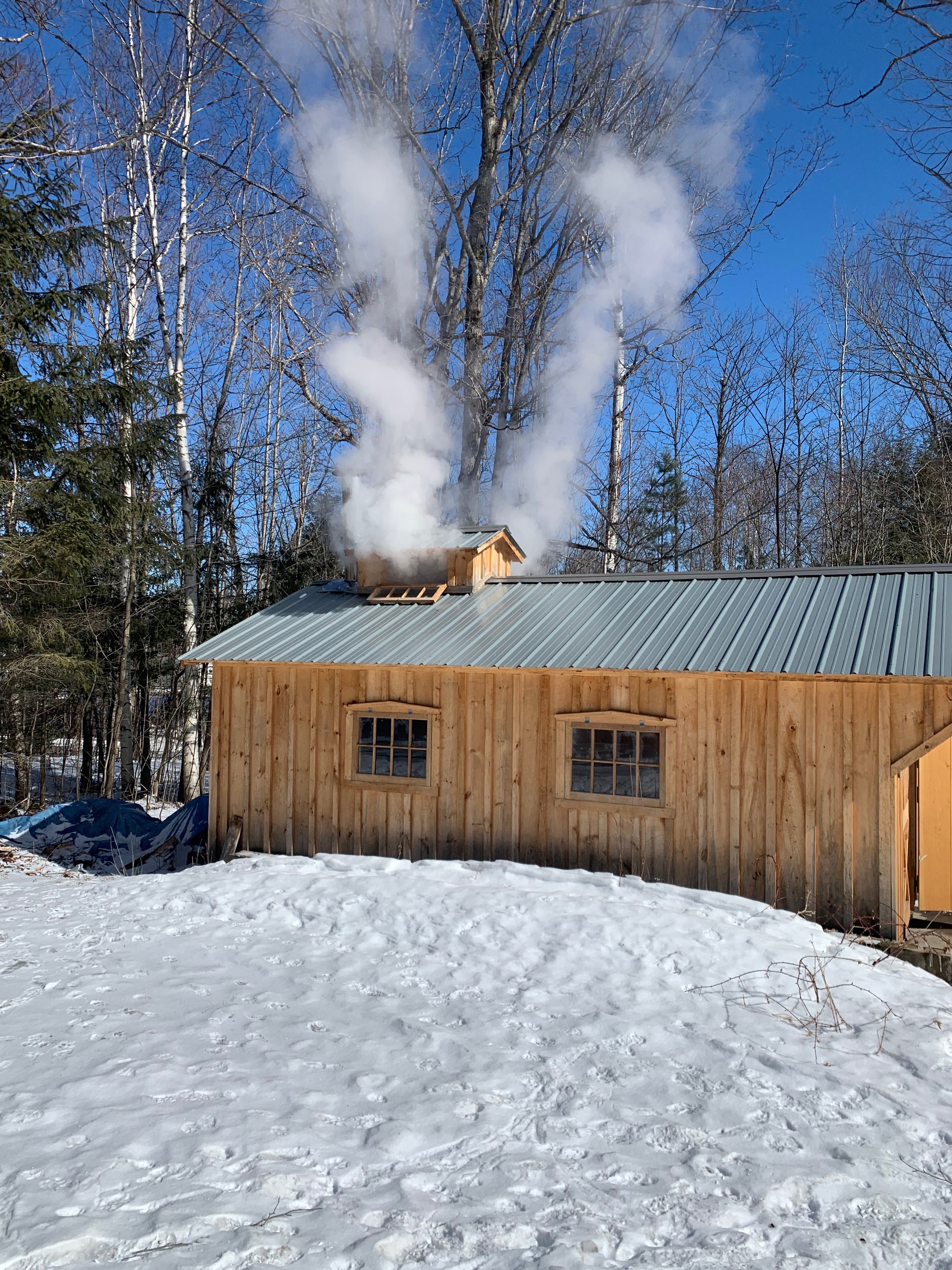
Tupper Lake is full of amazing history and from the museum at the old train depot to the new Crossroads Heritage Trail, that history is celebrated all around the village. This is a place where people love to chat about all that has made Tupper what it is today; as the town has gone from a small settlement to a thriving lumber town to a scenic, revitalized town offering outdoor adventures and natural beauty, fascinating people have come and gone and made their mark on the area.
The inventor
Just south of the village, at the end of a short road, lies Horseshoe Lake. It's a beautiful spot ideal for fishing and paddling and the peacefulness is delightful. There was a time, however, when the area was busy, noisy, and full of activity, thanks to one of the largest and most significant companies in the area, the Horse Shoe Forestry Company. Horse Shoe was started by inventor and intrepid businessman A.A. Low in 1896 as a logging company located near William Seward Webb's relatively new railroad line, making transportation of supplies and products easy. Low's company expanded, rather spectacularly, to include the production of maple syrup, bottled spring water, and berry preserves.
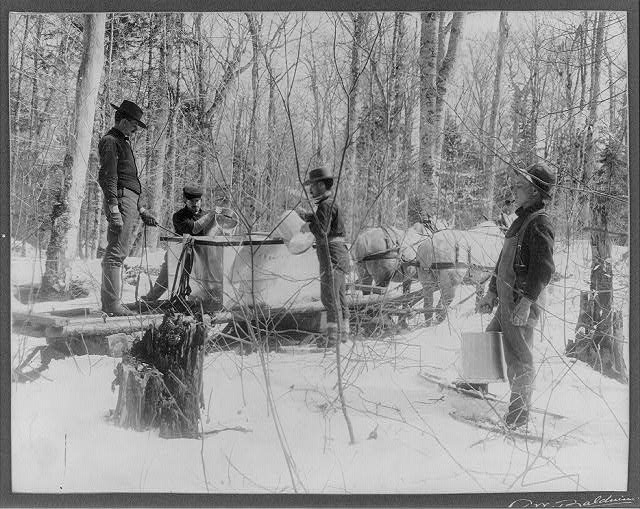
At it's height, Horse Shoe maintained the largest sugar bush not just in the Adirondacks or even the United States, but in the entire world. Other states may get a lot of attention for their syrup, but the fact is that there was a time when Tupper Lake was the center of the maple syrup universe with roughly 50,000 taps slowly collecting sap that would result in an astonishing 20,000 gallons of syrup produced in a year. Low's operation wasn't just big, it was innovative, too. Low developed unique square bottles (more on those later!) for his products, making them easier to package and transport, he developed a gravity system of tubes to collect sap that is in common use today, and he dammed waterways to provide electricity for his numerous buildings and machinery. Incidentally, some of those waterways are now beautiful places to paddle!
Unfortunately, the extensive lumber operations in the Adirondacks often led to forest fires, which had a devastating impact on the forests and connected communities. This is exactly what happened to the Horse Shoe Forestry Company; in 1908, a large fire likely caused by a spark from a railway locomotive brought an end to Low's extensive maple company. Fortunately, memories and memorabilia of this sweet endeavor remain in Tupper Lake for new generations to explore.
The treasure hunter
One of Tupper Lake’s most enthusiastic cultivators of local history is Town Historian Jon Kopp. In addition to being historian, Kopp is many things: grandfather, a retired fish and game technician, author, and owner of Wildwood Arts and Antiques, an antique shop on Park Street. At Wildwood, Adirondack history is found in abundance, from the items on the many shelves to the knowledge Kopp is happy to share with visitors.
A native of Long Island, Kopp came to the Adirondacks to attend Paul Smith's College, which appealed to his love of fishing. It was the trout that drew him here, along with the opportunity to live somewhere new. Over the years, his career as a fish and game technician — among other projects he helped reinvigorate the fisher population in the Catskills, reintroduce turkeys throughout the state, and protect Peregrine Falcon populations — coincided with his love of history and collecting and selling antiques. Although Wildwood has been in its current location for about four years, Kopp has been a presence as an auctioneer and antique dealer throughout the Adirondacks for much longer. Although he notes that his shop carries a great variety of items and that his taste is eclectic — "You can buy things here for a dollar or a thousand" — one of his specialties is Adirondack memorabilia, an extension of his seemingly limitless interest in Adirondack history and desire to preserve it for others to enjoy.
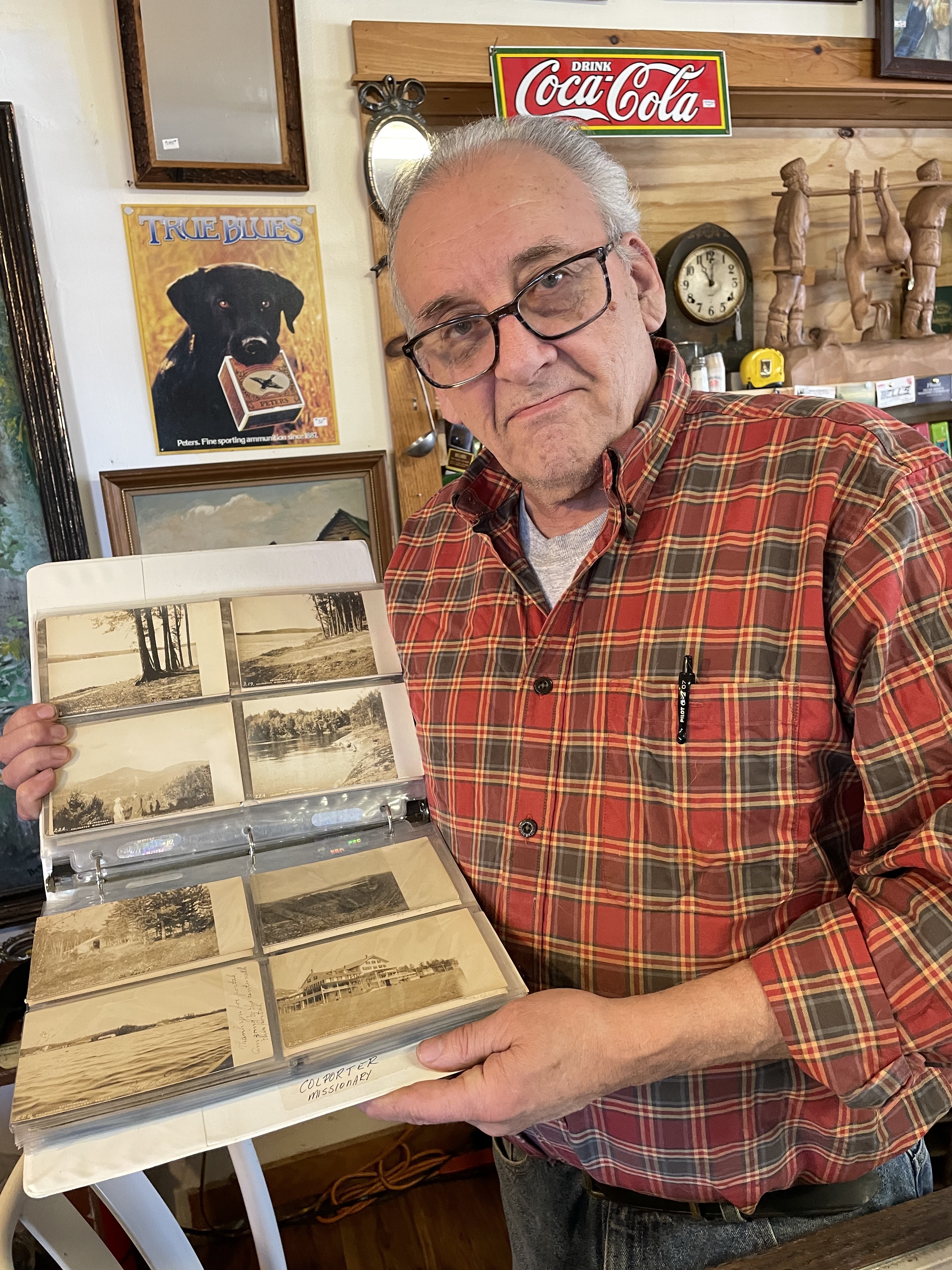
Kopp notes that nowadays it's easy to go online, to eBay or Etsy, to find that unique bit of history that you'd like to have in your home, but that's not what brings him joy and I agree with him. Part of the fun for people like Kopp, myself, and many others, is the treasure hunt. Whether you're looking for a piece of glass with uranium in it, a photo postcard, or a bottle from a long-lost syrup company, part of the thrill is looking, searching, and feeling the joy of the unexpected find. You never know where you'll find the piece of treasure that has your name on it.
On my first visit to Wildwood a year or two ago, I knew I wanted a bottle from Horse Shoe, but I didn't know if the shop would have any. On a shelf in a sunny window at the shop, alongside old glass milk and patent medicine bottles, I found a collection of distinctive square bottles of varying sizes on display (for the moment, there are still some in the shop). Some have metal lids, some have chipped rims, many of them have small cracks, but they are all fascinating to pick up and examine. They once held syrup or spring water, once traveled from Tupper Lake to other parts of the state on noisy railroads that are now no longer. There was a time when you could dive in Horseshoe Lake and find bottles that had been tossed into the lake decades ago, but a visit to Wildwood and Jon Kopp is a bit easier and more fun. Kopp has made a point of hunting for this particular bit of Tupper Lake treasure, not to keep for himself, but to share with others who are interested.
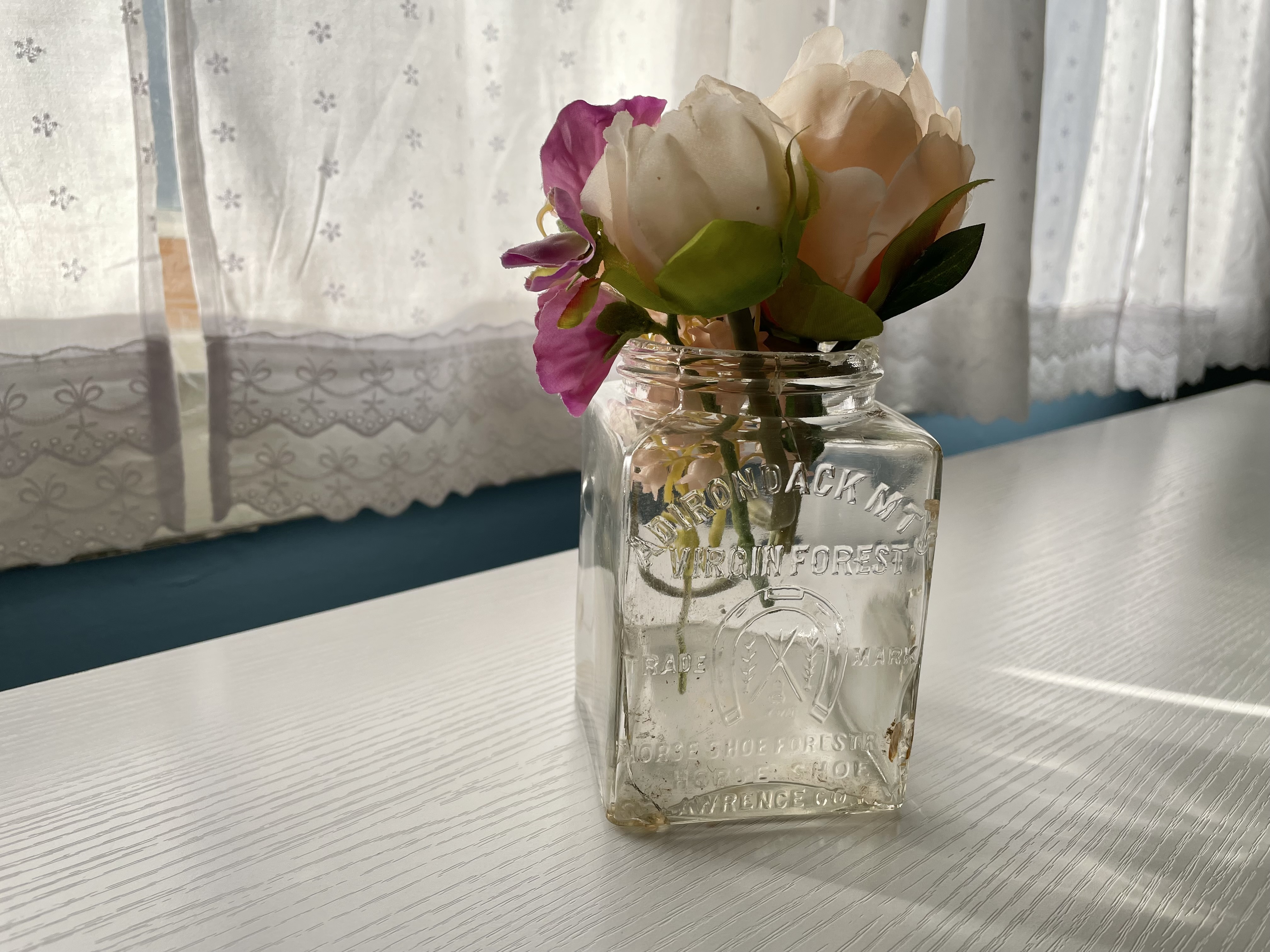
My bottle from Horse Shoe is perfectly imperfect. It's old and battered and it helps tell a fascinating story. I love it. And yes, it makes a great vase.
Wildwood Antiques is a place to take your time. Like the flow of sap, you shouldn’t rush down the aisles here because there are pieces of history all around you, ready for you to discover them. I suggest you go and plan to stay a while, to look at old photos of local landmarks, peruse rare books about the Adirondacks, and to chat with Jon Kopp. The items in his shop all have stories, and he is delighted to share them.
While you're in Tupper Lake, be sure to sample local goodies that make the most of maple, from the maple bacon donuts at Washboard Donut Shop to a stack of pancakes at Reandau's Swiss Kitchen. In need of syrup? Stop by the gift shop at The Wild Center or contact a local sugar shack to get the freshest and the best!
